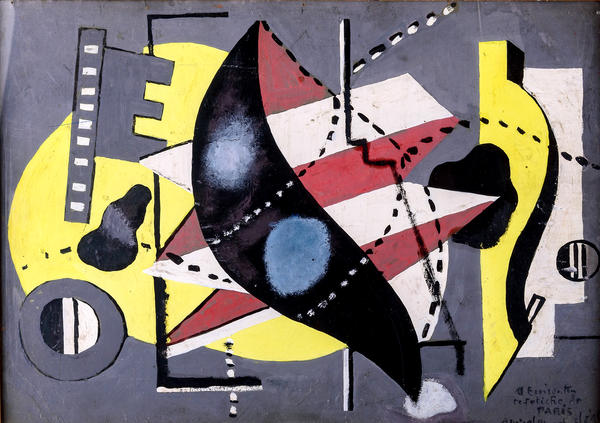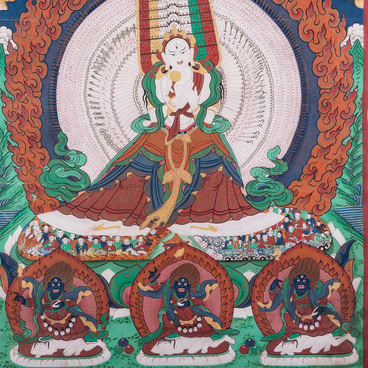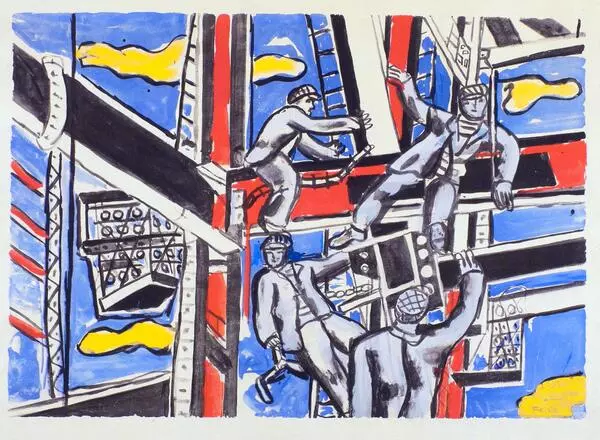From August 1929 till May 1932 Eisenstein, his co-director Grigori Alexandrov and cameraman Eduard Tisse were on a business trip abroad to master the newly invented sound films. Immediately after his arrival in Paris in 1929, Sergei Eisenstein became friends with a group of artists, musicians and writers, who were called the MontparnAssians, as many lived and worked in the artistic hub of the street Montparnasse. This informal group included Cubists, Surrealists, Dadaists and Constructivists — they had internal disputes about ways and means of developing art, but together opposed the dogmas of academicism.
They accepted the director of Battleship Potemkin and October as their brother. The Montparnassians also included a famous cubist artist Fernand Léger (1881-1945). He was an enthusiast of ‘machine civilization’ and tried to convey the spirit of the industrialization era in his paintings, mosaics and sculptures. Like many avant-garde artists, Léger was fond of cinematography and in 1924 he directed and produced an experimental collage film Mechanical Ballet. In this film, there were ‘dancing’ objects and letters, a smile and eyes of Kiki de Montparnasse and a Charlie Chaplin puppet. He hoped to make movies later on, and even went to Britain for this reason. Eisenstein kept the letters that the artist wrote from London about his project, which was never meant to come true.
Having made friends with Sergei Eisenstein, FernAnd Léger /lezhE/ gave him a painting with an inscription and a dedication that read: ‘This Paris fetish for Eisenstein. Your friend, F. Léger.’ The painting was made in gouache and, following the author’s advice, is placed in a white frame. It looks like a puzzle, which can be solved in different ways. It shows the symbols of art: painter’s palette, actor’s mask, musician’s violin deck, architect’s angle and lens, which together with the film, form the “cinema key.” Perhaps in this way Léger reflected Eisenstein’s idea that cinematography unites different arts and provides an opportunity to find the key to mysteries of art in general. Yet another interpretation of the painting is that the artist depicted the union of all the arts in the Montparnasse brotherhood of artists, which admitted Eisenstein.
They accepted the director of Battleship Potemkin and October as their brother. The Montparnassians also included a famous cubist artist Fernand Léger (1881-1945). He was an enthusiast of ‘machine civilization’ and tried to convey the spirit of the industrialization era in his paintings, mosaics and sculptures. Like many avant-garde artists, Léger was fond of cinematography and in 1924 he directed and produced an experimental collage film Mechanical Ballet. In this film, there were ‘dancing’ objects and letters, a smile and eyes of Kiki de Montparnasse and a Charlie Chaplin puppet. He hoped to make movies later on, and even went to Britain for this reason. Eisenstein kept the letters that the artist wrote from London about his project, which was never meant to come true.
Having made friends with Sergei Eisenstein, FernAnd Léger /lezhE/ gave him a painting with an inscription and a dedication that read: ‘This Paris fetish for Eisenstein. Your friend, F. Léger.’ The painting was made in gouache and, following the author’s advice, is placed in a white frame. It looks like a puzzle, which can be solved in different ways. It shows the symbols of art: painter’s palette, actor’s mask, musician’s violin deck, architect’s angle and lens, which together with the film, form the “cinema key.” Perhaps in this way Léger reflected Eisenstein’s idea that cinematography unites different arts and provides an opportunity to find the key to mysteries of art in general. Yet another interpretation of the painting is that the artist depicted the union of all the arts in the Montparnasse brotherhood of artists, which admitted Eisenstein.








